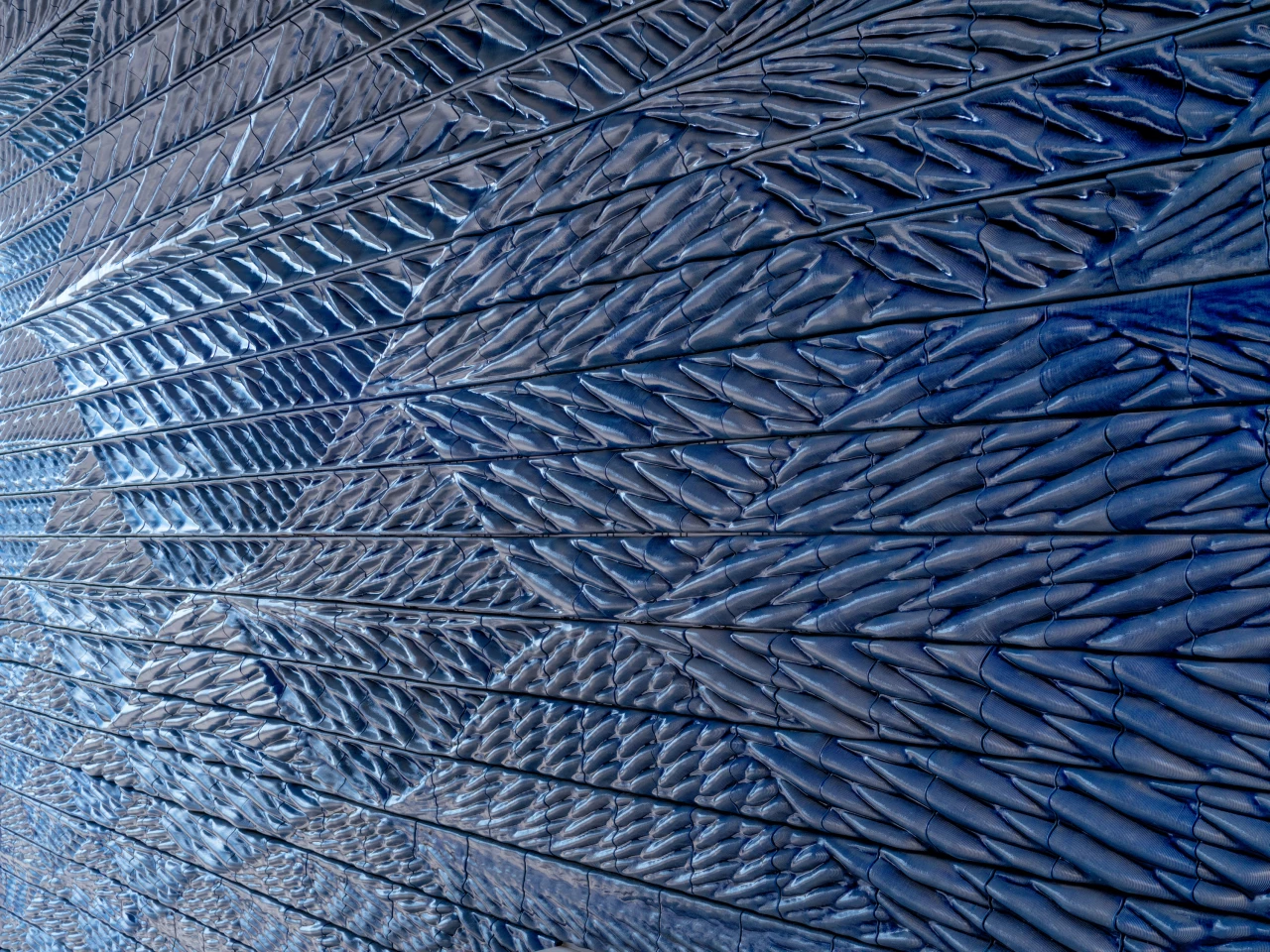3D-printed architecture tech can be used to produce everything from tiny houses to large buildings, but one thing most of them have in common is they tend to be relatively simple and uninspired in appearance. Studio RAP reminds us that this doesn't always have to be the case, however, with its New Delft Blue, which involved 3D printing a clay based mixture to create an intricate ceramic-lined passageway.
Located in the Dutch city of Delft, New Delft Blue was conceived to enliven a recently completed housing project. The overall design draws inspiration from the renowned Royal Delft Blue porcelain and features nature-inspired patterns which create peaks and valleys with subtly different shades of blue.
The passageway measures roughly 4 m (13 ft) in width, has a height of 8 m (26 ft), and a depth of 12 m (39 ft), with a total of 3,000 unique tiles. To create them, Studio RAP used an industrial robotic arm with a custom extruder, pushing a clay based mixture out of a nozzle in layers, according to a predetermined pattern to 3D print the tiles. Each tile measures roughly 30 x 40 x 7 cm (11 x 15 x 2.7 in) and took around 15 minutes to manufacture. Once finished, they were glazed and fired to create a ceramic finish before being transported to the site and installed.

"The approximately 3,000 unique ceramic tiles that cover the two gates are 3D printed, allowing for the creation of contemporary ceramics that are both rich and unique," explained Studio RAP. "Using an algorithmic approach to 3D pattern design, certain manufacturing constraints – maximum overhang, width, height and depth, shrinkage and internal support structure – were taken into account when the geometry of the tiles was generated.
"Because the tiles were 3D printed, applying variations to their shapes allowed for poetic ways of 'painting with shapes.' This is done by applying a transparent blue runny glaze that creates on the convex portions of the tiles (the hills) a light blue color while allowing for deep blue glaze pools in the concave (valley) areas of the tiles, creating smooth transitions between hues of blue."
Source: Studio RAP










